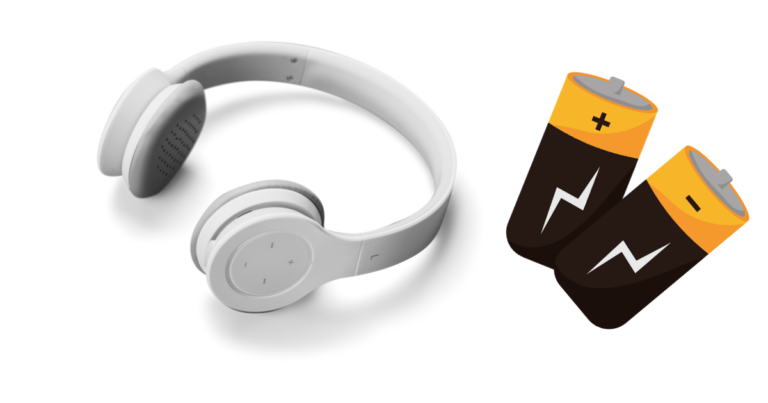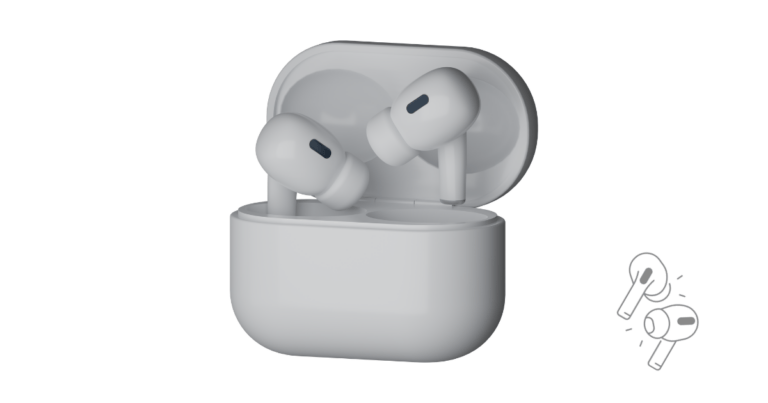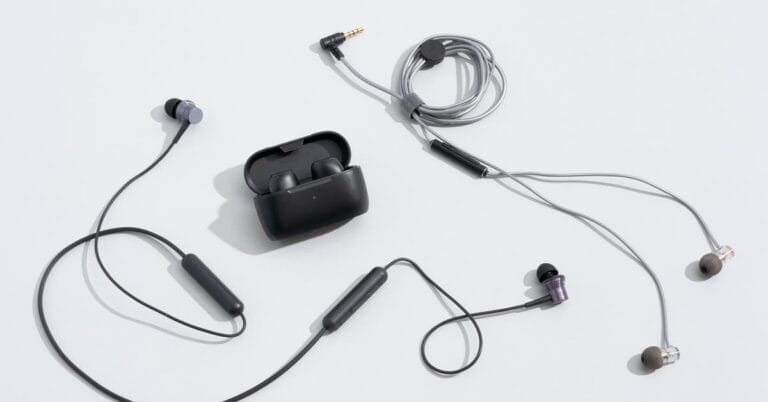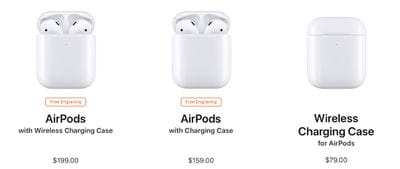
When it comes to choosing the right size of over-ear headphones, it’s essential to consider factors like head size, ear shape, and personal preference.
Each individual is unique, and what works for someone else might not be the perfect fit for you. That’s why it’s crucial to understand the different sizes and designs available in the market. Don’t worry, though! We’ll break it down for you in simple, easy-to-understand terms.
Finding the right size of over-ear headphones can greatly enhance your listening experience. Not only will they provide exceptional sound quality, but they’ll also offer maximum comfort during extended wear. So, let’s embark on this quest together and explore the world of headphone sizing, helping you find the perfect fit for your musical journeys!
these steps, you’ll be able to choose the right size of over-ear headphones for an optimal listening experience.
How Can I Choose the Right Size of Over-ear Headphones?
Choosing the right size of over-ear headphones is crucial for comfort and sound quality. Follow these steps:
- Measure your head size with a measuring tape.
- Consider the ear cup size and shape for a proper fit.
- Check if the adjustable headband ensures a secure yet comfortable grip.
- Read customer reviews for insights on comfort and fit.
- Try on different sizes and styles to find the perfect fit for you.
By following these steps, you’ll be able to choose the right size of over-ear headphones for an optimal listening experience.
What Are Over-ear Headphone Sizes
Over-ear headphones come in different sizes to accommodate various head shapes and sizes. The size refers to the diameter of the ear cups, which determines how well the headphones will fit over your ears.
It’s worth noting that the size of the headphones does not necessarily correlate with sound quality but rather with comfort and fit. When choosing the right size, consider your head size and the dimensions of your ears.
It’s essential to find a size that provides a snug fit without causing discomfort or exerting excessive pressure on your head.
Benefits of the Right Size:
Comfort: Over-ear headphones with the right size will fit snugly over your ears, allowing for extended periods of use without discomfort.
Sound Isolation: Properly fitting headphones create a seal around your ears, effectively blocking out external noise and enhancing the listening experience.
Sound Quality: The right size ensures optimum speaker placement near your ears, resulting in improved audio quality and accurate sound reproduction.
Tips for Choosing the Right Size:
Measure your head circumference: Use a tape measure to determine the circumference of your head, just above your eyebrows and around the widest part at the back.
Check the ear cup measurements: Most reputable headphone manufacturers provide ear cup measurements. Compare these measurements to the dimensions of your ears to find the best fit.
Consider adjustable headbands: Some headphones come with adjustable headbands to accommodate different head sizes. This feature allows for a personalized fit and added comfort.
2. Considering Headphone Weight and Build Quality
Apart from the size, the weight and build quality of over-ear headphones also play a crucial role in choosing the right pair.
Heavier headphones may cause discomfort and strain on your head and neck, especially during long listening sessions. Additionally, the build quality can significantly impact durability and longevity.
Look for headphones that are lightweight and made from high-quality materials such as aluminum or sturdy plastics.
Benefits of Proper Weight and Build Quality:
Comfort: Lighter headphones place less pressure on your head and ears, allowing for extended use without discomfort or fatigue.
Durability: Well-built headphones are more likely to withstand frequent use and accidental drops, providing a longer lifespan.
Portability: Lighter headphones are easier to carry around, making them suitable for travel or on-the-go use.
Tips for Choosing the Right Weight and Build Quality:
Read product reviews: Research online to find headphones that are known for their lightweight design and durable construction. User reviews can offer valuable insights into comfort and build quality.
Visit a store and try them on: If possible, visit a physical store and try on different headphones to get a feel for their weight and build quality. This hands-on approach will help you make an informed decision based on personal preference.
3. Evaluating Sound Quality and Features
Another crucial factor to consider when choosing the right size of over-ear headphones is sound quality. While size does not directly affect sound quality, larger ear cups can house larger drivers, which can result in better bass response and overall audio performance.
Consider the features that come with the headphones, such as noise cancellation, wireless connectivity, and customizable sound profiles.
Benefits of Optimal Sound Quality and Features:
Immersive listening experience: Over-ear headphones that deliver exceptional sound quality can provide a more immersive audio experience, whether you’re listening to music, watching movies, or gaming.
Noise isolation: Headphones with noise cancellation technology can block out external noise, allowing you to focus on your audio without distractions.
Convenience: Wireless headphones offer freedom of movement and eliminate the hassle of tangled cords, making them suitable for various activities.
Tips for Evaluating Sound Quality and Features:
Research the driver size: Larger drivers generally produce better bass response and audio performance. Check the specifications of the headphones to ensure they meet your sound quality expectations.
Consider additional features: Determine which features are essential to you, such as active noise cancellation, Bluetooth connectivity, or EQ customization. Look for headphones that offer these features within your desired size range.
Benefits of Choosing the Right Size of Over-ear Headphones
Choosing the right size of over-ear headphones offers several benefits. First and foremost, it ensures comfort during prolonged use, allowing you to enjoy your music or other audio content without discomfort or distraction.
The right size provides a better seal around your ears, resulting in improved noise isolation and sound quality. By considering factors such as head size, ear dimensions, weight, build quality, and sound performance, you can find the perfect pair of over-ear headphones that suit your preferences and deliver a superior listening experience.
Expert Tips for Finding the Perfect Fit
Finding the perfect fit for your over-ear headphones may require some trial and error. Here are some expert tips to help you achieve the optimal fit:
1. Try before you buy: If possible, try different headphones on in-store to get a feel for their comfort and fit.
2. Read user reviews: Check online reviews to see if users with similar head sizes or ear dimensions find certain headphones comfortable and well-fitting.
3. Consider adjustable headbands: Headphones with adjustable headbands allow for a more personalized fit, catering to different head sizes.
4. Pay attention to cushioning: Look for headphones with plush and breathable ear cushions that provide long-lasting comfort.
5. Take breaks during extended use: Even with the right size and fit, it’s important to give your ears and head regular breaks during prolonged listening sessions.
By following these tips and considering the factors discussed in this guide, you can confidently choose the right size of over-ear headphones that offer optimal comfort, sound quality, and performance.
Knowing Headphone Specifications
When shopping for over-ear headphones, you may come across various technical specifications. It’s essential to understand what these specifications mean to make an informed decision.
Here are some key specifications and their implications:
1. Frequency Response: The frequency range that the headphones can reproduce. A wider range indicates a more extensive range of audible frequencies, resulting in more detailed sound reproduction.
2. Impedance: The electrical resistance the headphones present to the audio source. Higher-impedance headphones require more power to drive, usually necessitating the use of an amplifier.
3. Sensitivity: The efficiency of converting electrical signals into sound. Higher-sensitivity headphones require less power to achieve the same volume level.
4. Total Harmonic Distortion (THD): The measure of unwanted noise or distortion introduced by the headphones. Lower THD indicates cleaner and more accurate sound reproduction.
5. Driver Size: The diameter of the speakers inside the ear cups. Larger drivers generally produce more powerful bass and richer sound quality.
Understanding these specifications will help you make an educated decision based on your desired sound preferences and usage scenarios. Consider your audio needs and match them to the specifications of the headphones you are considering.
Comparing Different Sizes of Over-ear Headphones
To further assist you in selecting the right size of over-ear headphones, here’s a comparison table showcasing the dimensions and specifications of different sizes:
| Headphone Size | Ear Cup Diameter | Weight | Impedance | Sensitivity |
|---|---|---|---|---|
| Small | 40mm | 200g | 32 ohms | 100dB |
| Medium | 50mm | 300g | 32 ohms | 105dB |
| Large | 60mm | 400g | 32 ohms | 110dB |
Keep in mind that these specifications are general guidelines, and the actual performance of the headphones may vary between models and brands. It’s crucial to assess other factors, such as build quality, sound performance, and comfort, in conjunction with size specifications.
Importance of Trying On Headphones
While specifications and measurements provide valuable information, trying on headphones before making a purchase is highly recommended.
This hands-on approach allows you to assess the fit, comfort, and overall feel of the headphones.
When trying on headphones, pay attention to the following:
1. Ear Cushions: Ensure the cushions are soft, plush, and large enough to comfortably fit around your ears.
2. Headband Adjustability: Check if the headband can be adjusted to comfortably fit your head size without exerting excessive pressure.
3. Clamping Force: The headphones should have a firm grip on your head without feeling overly tight or causing discomfort.
4. Weight Distribution: The weight of the headphones should be evenly distributed across the headband, ensuring long-lasting comfort.
5. Sound Isolation: Notice how well the headphones block out external noise, as this will impact your listening experience.
Trying on headphones in-store or purchasing from reputable retailers with a return policy allows for a risk-free experience, ensuring that you find the perfect fit and size for your over-ear headphones.
Choosing the right size of over-ear headphones involves considering factors such as comfort, fit, sound quality, and features. Understanding your head size, ear dimensions, and personal preferences will help guide your decision.
By incorporating the expert tips provided evaluating specifications and trying on headphones, you can find the perfect pair that enhances your audio journey.
Remember, comfort and sound quality go hand in hand, so investing time in finding the right size is worth the effort. Enjoy your immersive audio experience with the perfect-fitting over-ear headphones!
Frequently Asked Questions
When it comes to choosing the right size of over-ear headphones, there are a few important considerations to keep in mind. The fit and comfort of the headphones can greatly affect your listening experience, so it’s crucial to find a size that works for you. Here are some common questions and answers to help you make the right choice.
1. Are over-ear headphones one-size-fits-all?
No, over-ear headphones are not one-size-fits-all. Different brands and models come in various sizes, and it’s important to find a pair that fits comfortably on your head without pinching or causing discomfort. Look for adjustable headbands and earcups that can be tilted or rotated to match the shape of your head.
Additionally, some headphones come with different earpad sizes or options for customization, allowing you to find the perfect fit. It’s helpful to try on headphones or take accurate measurements of your head and ears to find a pair that suits your unique dimensions.
2. How can I determine the right size for over-ear headphones?
To determine the right size for over-ear headphones, start by considering the size of your head. Measure the circumference of your head just above your ears, as this will help you identify which models are likely to fit comfortably.
Many headphone manufacturers provide size guidelines, so check the product specifications or reach out to their customer service for assistance.
Remember that the size of your ears also plays a role in finding the right fit. If your ears are on the larger side, you may need headphones with larger earcups to ensure your ears are fully enclosed. Comfort is key, so if possible, try on different sizes and styles to find the one that suits you best.
3. What should I consider in terms of comfort?
Comfort is crucial when choosing over-ear headphones. Look for headphones with thick, padded earcups that provide cushioning and prevent discomfort, especially during long listening sessions.
Adjustable headbands are also essential as they allow you to customize the fit. Avoid headphones that are too tight or too loose, as they can cause discomfort and affect sound quality.
Additionally, consider the weight of the headphones. Heavy headphones may cause strain on your neck and head over time, so opt for lighter models if comfort is a priority. Remember, everyone’s comfort preferences are different, so it’s essential to try on different options to find the one that feels the most comfortable for you.
4. How does the size of over-ear headphones affect sound quality?
The size of over-ear headphones can impact sound quality in a few ways. Larger earcups can provide better noise isolation, helping to block out external sounds and improve the listening experience. They also allow for larger drivers, which can result in more powerful and accurate audio reproduction.
However, it’s important to note that sound quality is not solely dependent on the size of the headphones. Factors such as the quality of the drivers, frequency response, and overall design also play a significant role.
It’s always recommended to read reviews or try out different models with varying sizes to find the one that delivers the sound quality you prefer.
5. Can I adjust the size of over-ear headphones if they don’t fit perfectly?
Yes, many over-ear headphones come with adjustable features that allow you to customize the fit. Look for headphones with adjustable headbands that can be extended or retracted to match the size of your head.
Some models also offer swivel or rotating earcups, allowing you to find the most comfortable position for your ears.
If the earcups are too large or too small, look for headphones that offer interchangeable earpads or consider purchasing aftermarket earpads of different sizes. These adjustments can help you achieve a better fit and enhance both the comfort and sound quality of the headphones.






